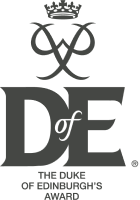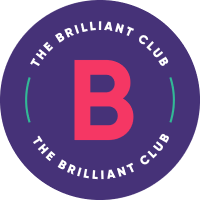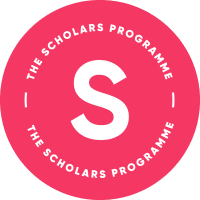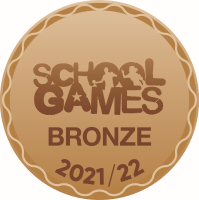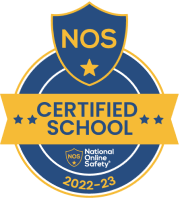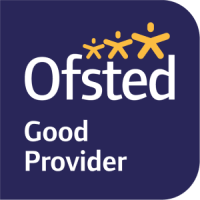This subject is part of the Faculty of Arts and Creative Technologies
Our Head of Faculty is
Mr R Down rdown@tcat.school
Our subject teachers and emails are
Mrs R Kent rkent@tcat.school
Our subject intent
At Key stage 3:
- Understand and apply the principles of nutrition and health
- Cook a repertoire of predominantly savoury dishes so that they are able to feed themselves and others a healthy and varied diet
- Become competent in a range of cooking techniques [for example, selecting and preparing ingredients; using utensils and electrical equipment; applying heat in different ways; using awareness of taste, texture and smell to decide how to season dishes and combine ingredients; adapting and using their own recipes]
- Understand the source, seasonality and characteristics of a broad range of ingredients
Lessons are arranged 5 per week in a 5- or 6-week block after which each group moves on to another subject area – e.g., from Art to DT to Food. There are two rotations per year giving all students a fair distribution of subject experience across the academic year. The final half term of the year consists of 3 short skills-based modules of two weeks each to support progression into the following year.
At Key Stage 4:
Pupils can choose to take GCSE Food Preparation and Nutrition (Eduqas). This course aims to equip learners with the knowledge, understanding and skills required to cook and apply the principles of food science, nutrition and healthy eating. It encourages learners to cook, enables them to make informed decisions about food and nutrition and allows them to acquire knowledge to be able to feed themselves and others affordably and nutritiously, now and later in life.
Curriculum Subject Offer
Year 7 Food and Nutrition
Subject intent:
Pupils will learn how to apply the principles of nutrition and healthy eating. Pupils will be introduced to the Eatwell guide, food health and safety whilst preparing food. Pupils will learn the importance of hygiene and potential hazards when working in the kitchen. Pupils will prepare and cook a variety of dishes incorporating theoretical understanding and knowledge.
Topic Breakdown
|
Module 1 – Introduction to Food and Nutrition |
Module 2 – Design and Make a bread-based dish |
| Preparing for practical work | Revisit food hygiene and safety |
| Personal Safety | Food provenance – cereals focus |
| Washing up | Taste testing – sensory analysis |
| Using an oven safely | Bread Making |
| Knife skills | Introduction to a design and make task |
| Introduction to the Eatwell Guide |
- practical observation based on learning objective of the lesson (Chef of the Week)
- End of rotation 1 written test
- IST ‘Seasonal fruit or vegetable’
- Track their progress using practical skills and reflecting on their own strengths and target
- Peer Practical Assessment – bread rolls (focus organisation, skills, washing up and final product)
- Written - Plan and create a recipe sheet (ingredients and method) for their chosen pizza design
- Written - Evaluate (test, evaluate and refine their ideas and products against a specification)
Food and Nutrition full Scheme of Work - Year 7
Year 8 Food and Nutrition
Subject intent
As part of pupils’ work with food, they will be taught how to cook and apply the principles of nutrition and healthy eating. Instilling a love of cooking: learning how to cook being a crucial life skill that enables pupils to feed themselves and others affordably and well, now and in later life.
In year 7 you were introduced to the principles of nutrition and healthy eating, food safety and hygiene, and a variety of skills needed to prepare a range of dishes.
During Year 8 you will learn, develop and demonstrate the principles of nutrition and healthy eating. Pupils will use the Eatwell guide, food and its nutritional value, health and safety to prepare and make food. Pupils will learn the importance of hygiene and potential hazards when working in the kitchen. Pupils will prepare and cook a variety of dishes incorporating theoretical understanding and knowledge.
Topic Breakdown
|
Module 1 – Diet and Health |
Module 2 –Skills and basic recipes |
| Preparing for practical work (food hygiene and safety). | Recall and secure food hygiene and safety knowledge |
| Nutrition - revisiting Eatwell and introducing macro and micro- nutrients. | Explore the ingredients and methods of basic mixtures/recipes (pastry, cake and sauce). |
| Demonstrate and secure a range of practical skills. E.g. using weighing and measuring, knife skills, using the oven, etc | Identify the key parts to recipe and adapt a recipe to suit a need. |
How you will be assessed:
Module 1 – Diet and health
- Practical observation (teacher assessment) based on learning objective of the lesson (Chef of the Week)
- Track their progress (self-assessment) using practical skills and reflecting on their own strengths and target (teacher assessment)
- IST ‘Cultural Cuisine’ • Theory - end of rotation 1 written test
Module 2 – Skills and basic recipes
- Practical observation (teacher assessment) based on learning objective of the lesson (Chef of the Week)
- Theory (peer assessment) - Plan and create a recipe sheet (ingredients and method) for macaroni cheese adapting to meet their tastes
- Final practical (teacher and self-assessment) based on macaroni cheese focus on skills, use of equipment, independence, hygiene and safety, presentation of final product
Food and Nutrition full Scheme of Work - Year 8
Year 9 Food and Nutrition
Subject intent
As part of pupils work with food, they will be taught how to cook and apply the principles of nutrition and healthy eating. Instilling a love of cooking: learning how to cook being a crucial life skill that enables pupils to feed themselves and others affordably and well, now and in later life.
In year 8 you began to develop and demonstrate the principles of nutrition and healthy eating, food safety and hygiene in the dishes you prepared.
During Year 9 you will secure and demonstrate a range of food skills, increasing in complexity and accuracy, to cook a wider range of dishes, safely and hygienically, and to apply your knowledge of nutrition and food provenance. In addition, you will consider consumer issues, food and its functions. Pupils will prepare and cook a variety of dishes incorporating theoretical understanding and knowledge.
Topic Breakdown
|
Module 1 – Diet Through Life |
Module 2 – Design and Make British Cuisine |
| Food hygiene (contaminants) and safety (knife skills) | Food Provenance - British Cuisine Mini NEA2: Introduction to GCSE NEA |
| Nutrition - dietary needs through life | Consumer choice |
| Consumer choice - special diets | Skills focus – cake and batters. |
| Identify the key parts to recipe and adapt a recipe to suit a need. | Plan and prepare a dish that meets a specification. |
You will be assessed:
Module 1:
- Teacher – Practical observation based on learning objective of the lesson (Chef of the Week); Written assessment GCSE Question ‘Hygiene and Food Safety’
- IST ‘Food Hero’
- Pupil – Track their progress using practical skills relating to their own strengths and target – reflection
- Peer - Practical Assessment 'Spaghetti Bolognese’
Module 2 – British Cuisine
- Written - Plan and create a recipe sheet (ingredients and method) for their chosen dish to meet the British cuisine specification.
- Practical – prepare and present their chosen dish whilst following food hygiene and safety guidelines.
- Written - Evaluate (test, evaluate and refine their ideas and products against a specification)
Food and Nutrition full Scheme of Work - Year 9
Year 10 Food and Nutrition
Subject intent
The Eduqas GCSE in Food Preparation and Nutrition equips learners with the knowledge, understanding and skills required to cook and apply the principles of food science, nutrition and healthy eating. It encourages learners to cook, enables them to make informed decisions about food and nutrition and allows them to acquire knowledge to be able to feed themselves and others affordably and nutritiously, now and later in life.
During Key Stage 3 you:
- prepared, cooked and served an increasingly complex range of dishes with precision.
- demonstrated your understanding of food provenance, production and processing.
- applied your healthy eating and nutrition knowledge.
- demonstrated and applied your awareness of consumer preferences and the reasons for choices made.
- apply your knowledge of food science in a practical and meaningful way.
During Year 10 you will learn about six food commodity groups and cover the following:
- develop knowledge and understanding of the functional properties and chemical characteristics of food as well as a sound knowledge of the nutritional content of food and drinks.
- understand the relationship between diet, nutrition and health, including the physiological and psychological effects of poor diet and health.
- understand the economic, environmental, ethical and socio-cultural influences on food availability, production processes, diet and health choices.
- demonstrate knowledge and understanding of functional and nutritional properties, sensory qualities and microbiological food safety considerations when preparing, processing, storing, cooking and serving food.
- understand and explore a range of ingredients and processes from different culinary traditions (traditional British and international) to inspire new ideas or modify existing recipes
Topic Breakdown
|
|
Half term 1 |
Half term 2 |
|
Autumn |
Fruit and vegetables | Dairy and Alternatives |
|
Spring |
Cereals | Meat, poultry, Fish and Eggs |
|
Summer |
Butter, oils, margarine, sugar and syrup | Soya, tofu, microproteins, beans, nuts and seeds |
You will be assessed:
- Seneca Learning (online) end of topic tests
- Focused NEA Investigations (NEA1 Science investigation and/or NEA2 Own dish choice) based on individual commodities.
Food and Nutrition full Scheme of Work - Year 10
Year 11 Food and Nutrition
Subject intent
The Eduqas GCSE in Food Preparation and Nutrition equips learners with the knowledge, understanding and skills required to cook and apply the principles of food science, nutrition and healthy eating. It encourages learners to cook, enables them to make informed decisions about food and nutrition and allows them to acquire knowledge to be able to feed themselves and others affordably and nutritiously, now, and later in life.
During year 10 you explored six food commodity areas (fruit and vegetables, dairy and alternatives, cereals, meat, poultry, fish and eggs, fats and sugars and beans, seeds and microproteins) and developed your knowledge of nutrition, diet and health, the science of food, food provenance and factors affecting food choice whilst preparing a range of dishes.
During Year 11 you will apply the knowledge you have gained in year 10. Food and Nutrition in Action is two non-examination assessments set by exam board (WJEC Eduqas):
- Assessment 1 the Food Investigation assessment is 15% of your final qualification, you will investigate the working characteristics and the functional and chemical properties of a selected ingredient.
- Assessment 2 the Food Preparation Assessment is 35% of your final qualification, you will plan, prepare, cook and present a selection of dishes, to meet particular requirements such as a dietary need, lifestyle choice or specific context.
Topic Breakdown
|
|
Half term 1 |
Half term 2 |
|
Autumn |
Expectations of year 11.
Food safety Principles of nutrition NEA1 – Food Science Investigation. |
NEA1 – Food Science Investigation
NEA2 – Food Preparation Assessment |
|
Spring |
NEA2 – Food Preparation Assessment | Revisit, revise and secure knowledge of fruit and vegetables, dairy, and cereals. |
|
Summer |
Revisit, revise and secure knowledge of meat, fish, poultry and eggs;
sugars and fats; and beans, seeds and mycoproteins. |
You will be assessed
Mock Exam (January)
Revision topics on Seneca Learning and past exam papers (spring/summer term)
Eduqas Assessments:
Component 1: Principles of Food Preparation and Nutrition (written paper 50% of qualification) (Summer term – externally assessed)
Component 2: Food Preparation and Nutrition in Action (two non-examination assessment (NEAs) 50% of qualification)
- Assessment 1: The Food investigation (submitted Autumn term, internally assessed, externally reviewed)
- Assessment 2: The Food Preparation assessment (submitted Spring term, internally assessed, externally reviewed)
Food and Nutrition full Scheme of Work - Year 11
Within each subject we have our own specific personalised marking and feeback policy.
|
Arts and Creative Technology |
||
|
|
KS3 |
KS4 |
|
Verbal dialogue |
Teachers circulate with purpose, checking pupils’ work and collecting information on whole-class strengths, skill development, errors, misconceptions, knowledge gaps etc. The teacher adjusts their lesson accordingly. |
Teachers circulate with purpose, checking pupils’ work, providing feedback if appropriate and collecting information on whole-class strengths, errors, misconceptions, knowledge gaps etc. The teacher adjusts their lesson (or SOW) accordingly. |
|
Self/peer assessment |
Verbal or written feedback through strengths/targets and annotations. If written, peer and self-assessment should be completed in blue pen. |
Verbal or written feedback through strengths/targets and annotations. If written, peer and self-assessment should be completed in blue pen. |
|
Whole Class Feedback |
When pupils complete extended pieces of work, teachers will look through a sample of work from each class they teach and note pupils’ strengths and targets. Teachers will then use this information to provide whole class feedback on what pupils are doing well and how pupils can improve their work further. As this type of marking involves the teacher looking at a sample of work, the teacher will use a rotation system to ensure that the work of all pupils is looked at on a regular basis. Where books are not used, verbal responses from pupils or video evidence can be used. |
When pupils complete extended pieces of writing, teachers will read through a sample of books from each class they teach and note pupils’ strengths and targets. Teachers will then use this information to provide whole class feedback on what pupils are doing well and how pupils can improve their work further. As this type of marking involves the teacher looking at a sample of books, the teacher will use a rotation system to ensure that the books of all pupils are looked at on a regular basis. Where books are not used, verbal responses from pupils or video evidence can be used. |
|
Written comments |
Teachers within the department will either: 1. Check through the work of all pupils and use a marking code to indicate the strengths and targets of the work. The marking code will be shared with all pupils and pupils will be given precise instruction about how to improve their work. OR 2. Read through the work of all pupils and write a strength comment and target comment at the end of the piece of work. OR 3. Record evidence of work through suitable media, providing pupils with a strength and target comment relevant to the piece of work. SPAG Teachers will identify where pupils make errors in their spelling, punctuation and grammar and pupils will be given time in lessons to make corrections (by circling errors where SPAG mistakes appear). If several pupils in a class are making the same spelling, punctuation or grammar error then the teacher will address this with the class. |
Teachers within the department will either: 1. Read through the work of all pupils and use a marking code to indicate the strengths and targets of the work. The marking code will be shared with all pupils and pupils will be given precise instruction about how to improve their work. OR 2. Read through the work of all pupils and write a strength comment and target comment at the end of the piece of work. OR 3. Record evidence of work through suitable media, providing pupils with a strength and target comment relevant to the piece of work.
SPAG Teachers will identify where pupils make errors in their spelling, punctuation and grammar and pupils will be given time in lessons to make corrections (by circling errors where SPAG mistakes appear). If several pupils in a class are making the same spelling, punctuation or grammar error then the teacher will address this with the class.
Written feedback forms part of the module feedback process in vocational courses. This is intended to be summative for that unit/module but formative toward improvement in the following unit/module. |
|
Frequency of feedback |
Live feedback and responsive teaching will take place in most lessons where pupils have been asked to complete extended pieces of work. * Whole-class feedback will take place once a week. Peer/self-assessment When deemed to be the most effective method of assessing work produced in lessons Written comments will take place after between 10 and 15 lessons (around twice per term), as appropriate for the pace of the class. OR Once per module/rotation.
|
Live feedback and responsive teaching will take place in most lessons where pupils have been asked to complete extended pieces of writing. * Whole-class feedback will take place once a week. Peer/self-assessment When deemed to be the most effective method of assessing work produced in lessons Written comments will take place after between 10 and 15 lessons (around twice per term), as appropriate for the pace of the class. There may be several lessons where pupils do not write extensively. Instead lesson time will be used to: (for example) read and discuss the musical scores; annotate the text/diagrams; make notes about the set-works; complete short comprehension activities. |
|
Response to feedback |
When directed after marking/whole class feedback, pupils will be expected to make a response in blue pen OR Make media application of their feedback in their ongoing work. In some instances, pupils will be expected to put the title DIRT and either re-draft an entire piece of work or a section of the piece of work according to the teacher’s instructions. In other instances, pupils will be expected to apply their feedback in the form of transferable skills applied in a new task. This would be done in blue pen when relevant. In further instances, pupils may be asked to answer questions posed by the teacher. Responses to spelling mistakes include writing out misspelled words such as subject specific vocabulary or key words. |
When directed after marking/whole class feedback, pupils will be expected to make a response in blue pen OR Make media application of their feedback in their ongoing work. In some instances, pupils will be expected to put the title DIRT and either re-draft an entire piece of work or a section of the piece of work according to the teacher’s instructions. In other instances, pupils will be expected to apply their feedback in the form of transferable skills applied in a new task. This would be done in blue pen when relevant. In further instances, pupils may be asked to answer questions posed by the teacher. Responses to spelling mistakes include writing out misspelled words and listening to explicit teaching of spelling (etymology etc.). |
|
Summative assessment |
1 x formal assessment each half term or module rotation. A piece of extended work which is marked using comparative judgement on the No More Marking platform. Band boundaries are applied to the assessments once judged, as stated in the SOW. |
1 x formal assessment each half term. A piece of extended writing which is marked using comparative judgement on the No More Marking platform. Band boundaries are applied to the assessments once judged. This might be a practical piece or some written work, as stated in the SOW. |
